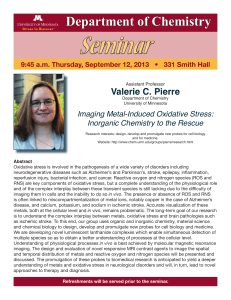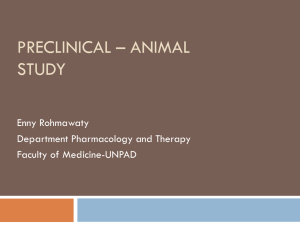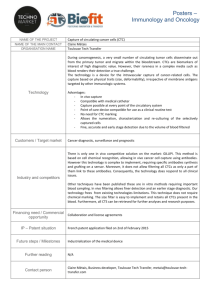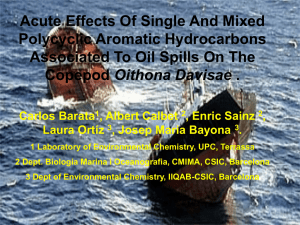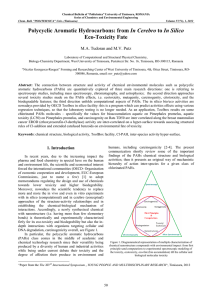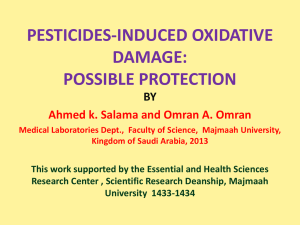DOCTORAL CANDIDATE: DEGREE: FACULTY: DEPARTMENT:
advertisement
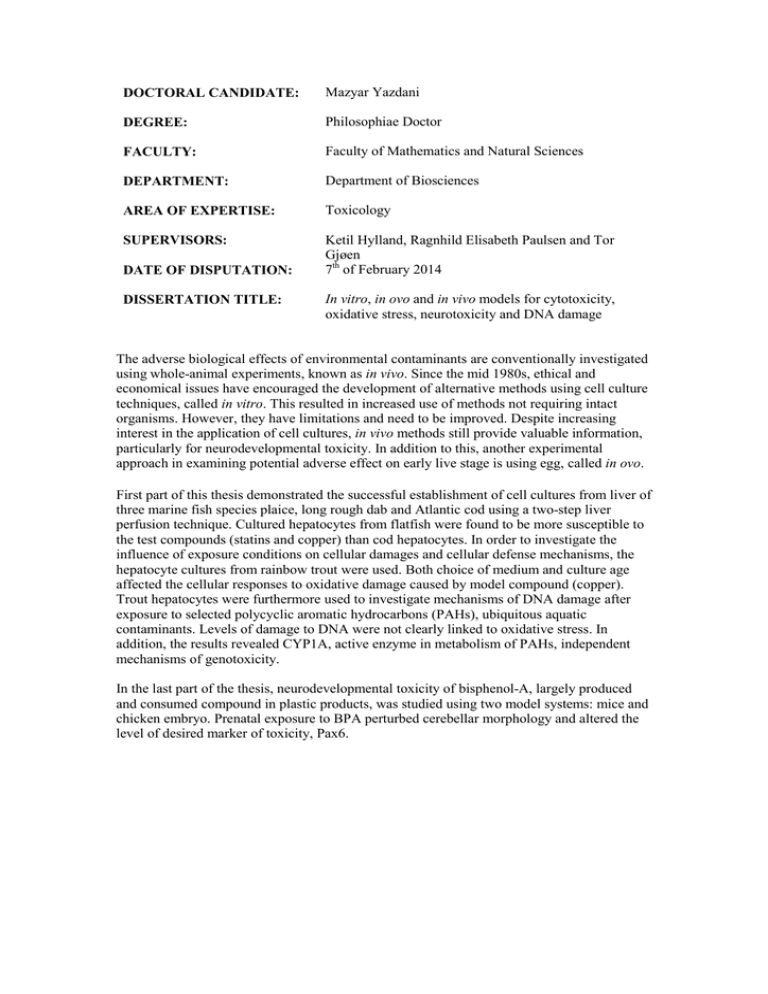
DOCTORAL CANDIDATE: Mazyar Yazdani DEGREE: Philosophiae Doctor FACULTY: Faculty of Mathematics and Natural Sciences DEPARTMENT: Department of Biosciences AREA OF EXPERTISE: Toxicology SUPERVISORS: Ketil Hylland, Ragnhild Elisabeth Paulsen and Tor Gjøen 7th of February 2014 DATE OF DISPUTATION: DISSERTATION TITLE: In vitro, in ovo and in vivo models for cytotoxicity, oxidative stress, neurotoxicity and DNA damage The adverse biological effects of environmental contaminants are conventionally investigated using whole-animal experiments, known as in vivo. Since the mid 1980s, ethical and economical issues have encouraged the development of alternative methods using cell culture techniques, called in vitro. This resulted in increased use of methods not requiring intact organisms. However, they have limitations and need to be improved. Despite increasing interest in the application of cell cultures, in vivo methods still provide valuable information, particularly for neurodevelopmental toxicity. In addition to this, another experimental approach in examining potential adverse effect on early live stage is using egg, called in ovo. First part of this thesis demonstrated the successful establishment of cell cultures from liver of three marine fish species plaice, long rough dab and Atlantic cod using a two-step liver perfusion technique. Cultured hepatocytes from flatfish were found to be more susceptible to the test compounds (statins and copper) than cod hepatocytes. In order to investigate the influence of exposure conditions on cellular damages and cellular defense mechanisms, the hepatocyte cultures from rainbow trout were used. Both choice of medium and culture age affected the cellular responses to oxidative damage caused by model compound (copper). Trout hepatocytes were furthermore used to investigate mechanisms of DNA damage after exposure to selected polycyclic aromatic hydrocarbons (PAHs), ubiquitous aquatic contaminants. Levels of damage to DNA were not clearly linked to oxidative stress. In addition, the results revealed CYP1A, active enzyme in metabolism of PAHs, independent mechanisms of genotoxicity. In the last part of the thesis, neurodevelopmental toxicity of bisphenol-A, largely produced and consumed compound in plastic products, was studied using two model systems: mice and chicken embryo. Prenatal exposure to BPA perturbed cerebellar morphology and altered the level of desired marker of toxicity, Pax6.
